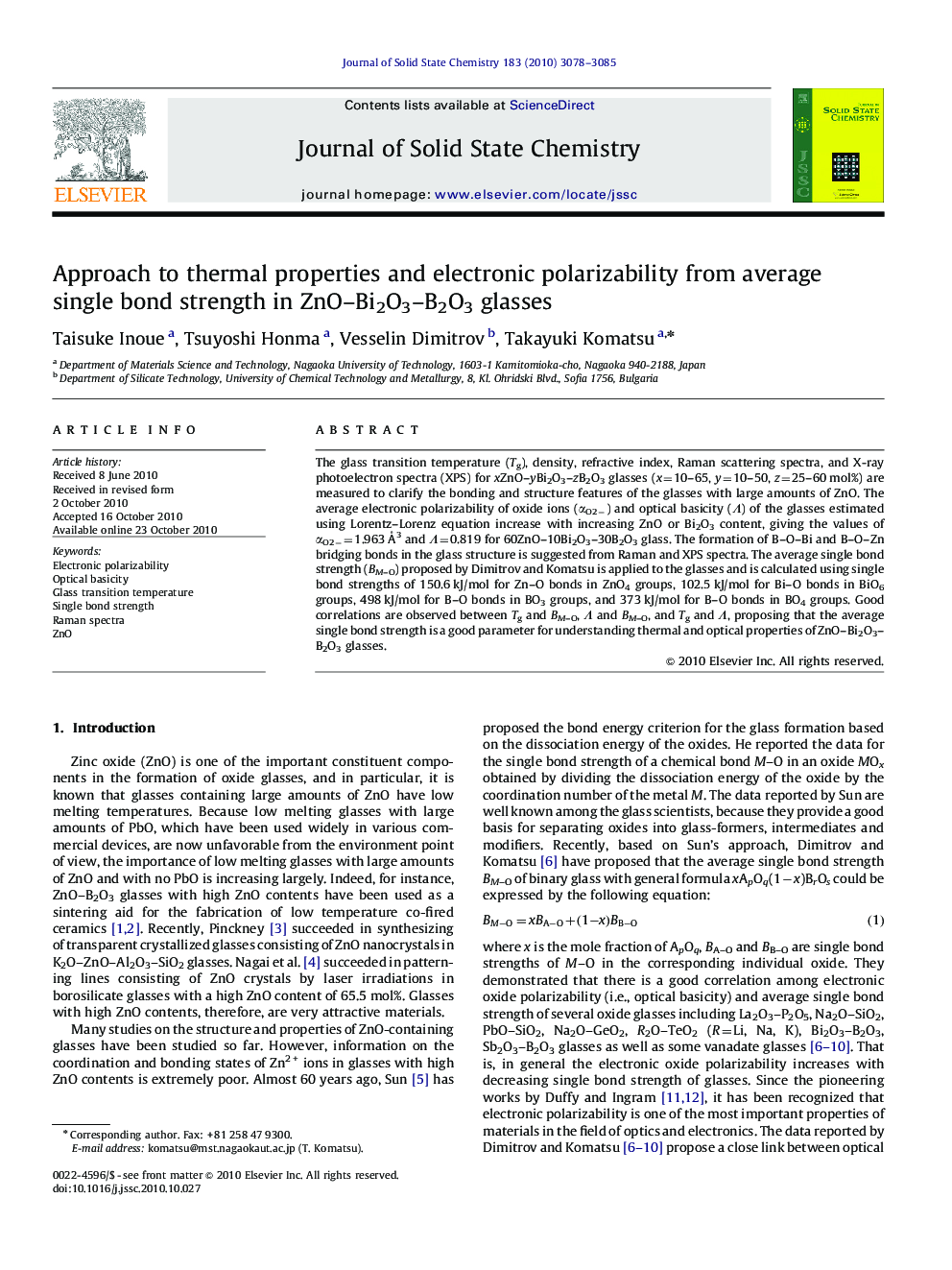| Article ID | Journal | Published Year | Pages | File Type |
|---|---|---|---|---|
| 1333261 | Journal of Solid State Chemistry | 2010 | 8 Pages |
The glass transition temperature (Tg), density, refractive index, Raman scattering spectra, and X-ray photoelectron spectra (XPS) for xZnO–yBi2O3–zB2O3 glasses (x=10–65, y=10–50, z=25–60 mol%) are measured to clarify the bonding and structure features of the glasses with large amounts of ZnO. The average electronic polarizability of oxide ions (αO2−) and optical basicity (Λ) of the glasses estimated using Lorentz–Lorenz equation increase with increasing ZnO or Bi2O3 content, giving the values of αO2−=1.963 Å3 and Λ=0.819 for 60ZnO–10Bi2O3–30B2O3 glass. The formation of BOBi and BOZn bridging bonds in the glass structure is suggested from Raman and XPS spectra. The average single bond strength (BMO) proposed by Dimitrov and Komatsu is applied to the glasses and is calculated using single bond strengths of 150.6 kJ/mol for ZnO bonds in ZnO4 groups, 102.5 kJ/mol for BiO bonds in BiO6 groups, 498 kJ/mol for BO bonds in BO3 groups, and 373 kJ/mol for BO bonds in BO4 groups. Good correlations are observed between Tg and BMO, Λ and BMO, and Tg and Λ, proposing that the average single bond strength is a good parameter for understanding thermal and optical properties of ZnOBi2O3B2O3 glasses.
Graphical abstractThis figure shows the correlation between optical basicity Λ and average single bond strength BMO in ZnOBi2O3B2O3 glasses. A good correlation is observed, proposing that the average single bond strength is a good parameter for understanding optical properties of ZnOBi2O3B2O3 glasses.Figure optionsDownload full-size imageDownload as PowerPoint slide
